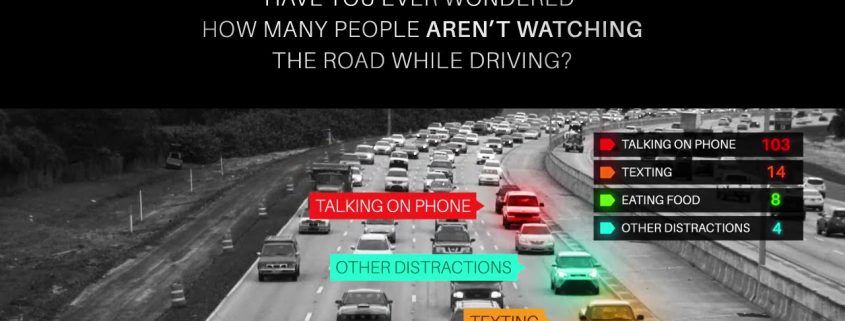Dealing with Distraction
When it comes to safety there is plenty of information at our fingertips and it may feel like its repetitive, yet with 4,000 truck drivers a year losing their lives in accidents, isn’t it worth the risk of repeating a few best practices? One of the main issues we have on the road today is the increase of distracted drivers. Today we will look at best practices to deal with the rest of the distracted drivers around us by identifying them and controlling our variables.
Giving ourselves ample room to navigate is the first step to avoiding issues. Following too close is the number one reason for collisions so leaving more room only makes sense and gives us the time needed to react. The best practice here is to alert the driver that their distraction is noticeable. A light tap of the horn is enough to jolt most drivers back to their focus on the road. Once the driver is alert it still makes sense to distance yourself from this driver. They are likely to return to the source of their distraction. Does this mean avoiding 1/3 of all the drivers on the road? In the simplest of terms, yes. The only three things that we can do is identify the distracted driver, alert them that you are present and avoid them.
Before we can discuss the distraction of the other vehicle, we must address our own distractions. We tend to think we are more capable than others of multi-tasking. Studies have shown that over 84% of drivers found it unacceptable that other driver’s text or send emails while driving and yet 36% of the exact same drivers admit to having texted or emailed while driving. There are different types of distractions but fall into three general categories:
Cognitive distraction
Cognitive (mental) distraction-the mind is focused on something besides driving. The driver may be lost in thought, listening to their favorite podcast and just not focused on driving. This is the hardest distraction to overcome. No one is suggesting giving up podcasts, just to balance out their potential to distract with remaining alert and focused.
Visual distraction
If the driver’s eyes are off the road ahead or their surroundings, they are visually distracted. GPS devices are common source of distraction.
Manual distraction
When a driver has one or both hands off the wheel that is considered a manual distraction. Eating, Drinking, and Smoking are all examples of manual distraction.
Texting and driving combine all three forms of distraction which is why its now considered 6 times more dangerous than drunk driving. The following tips are not new, or different, or rocket science. They are same tips we all are aware of, but can we honestly say we do this every time we get behind the wheel?
Only use your cell phone for emergency situations. Even hands free can distract a driver …
If you are drowsy pull off the road
Avoid eating while driving
Adjust lights, radio, climate and GPS before leaving
Now that you are alert and following at a safe distance it’s time to identify the signs of the distracted driver. The top three issues to watch out for:
Vehicle is drifting or cannot maintain a lane
Erratic braking or following other vehicles too closely
Speeding up and slowing down
There was recently a woman who hit a man outside his car, and he fell off a bridge. Luckily, he was rescued but the woman was looking for a cookie in her purse. There are countless incidents of distracted behavior and the only thing we can do is watch for those not watching for us. Honking a horn and a light tap of the horn are different sentiments. Letting the driver know that they have drifted helps you stay alive and hopefully alerts them into focus. Safety is a matter of doing what we know is right and helping those around us make those choices as well.





